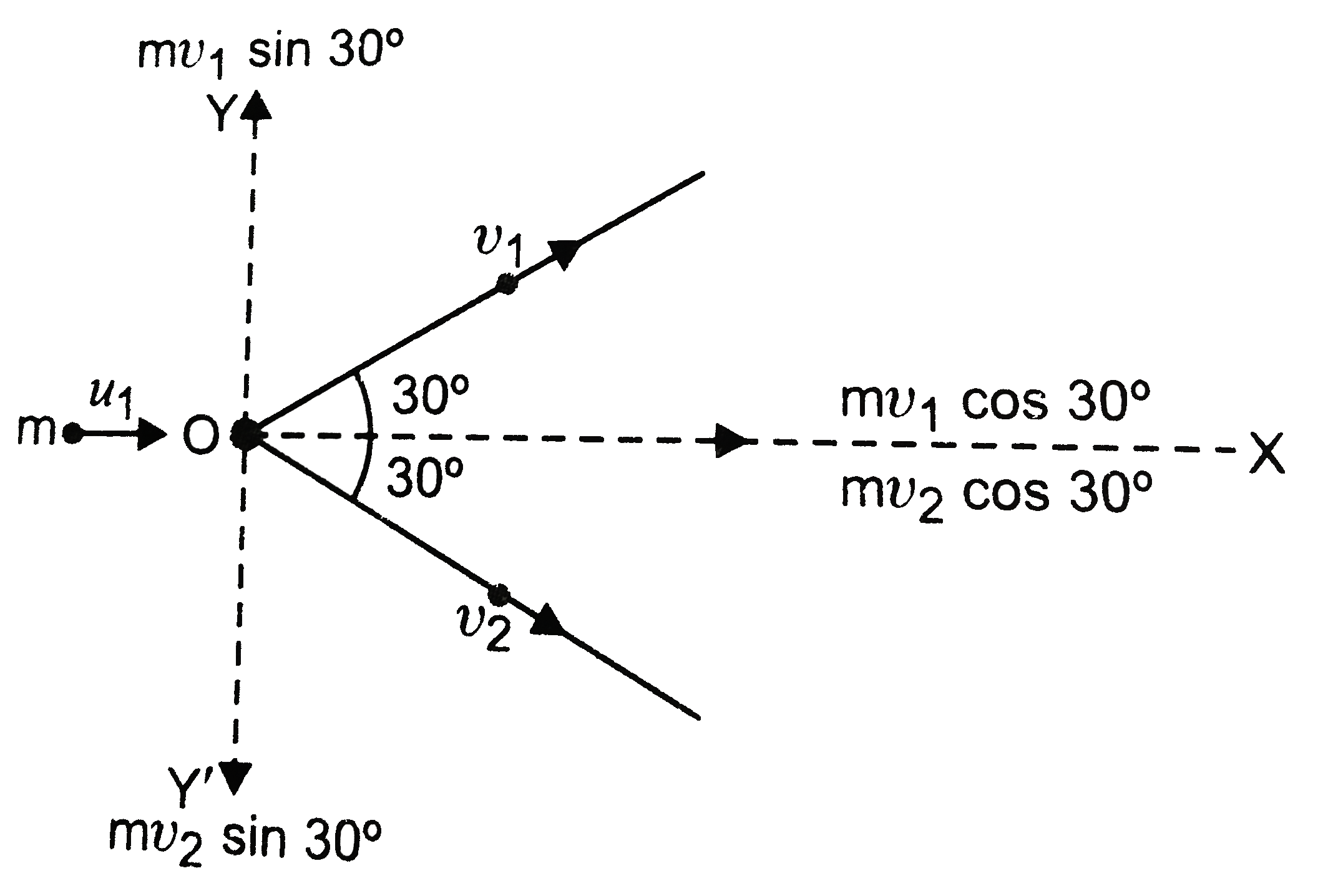Let `m_(1)=m_(2)=m,u_(1)=9m//s,u_(2).`
If `v_(1),v_(2)` are velocites of two balls after collision, then from principle of conservation of linear momentum
(i) along 7-axis
`mv_(1)sin30^(@)-mv_(2)sin30^(@)=0`
or `v_(1)-v_(2)=0` …(i)
(ii) along X-axis
`mv_(1)cos30^(@) +mv_(2)cos30^(@)=9m`
or `(v_(1)+v_(2))(sqrt(3))/(2)=9 or v_(1)+v_(2)=(18)/(sqrt(3))` ...(ii)
Solving (i) and (ii), we get
`v_(1)=(9)/(sqrt(3))=5.196m//s`
Also, from (i) `v_(2)=v_(1)=5.196m//s`
Initial K.E. of the system
`E_(1)=(1)/(2)m_(1)u_(1)^(2)+(1)/(2)m_(2)u_(2)^(2)=(1)/(2)m(9)^(2)=(81)/(2)m`
Final K.E. of the system
`E_(2)(1)/(2)m_(1)v_(1)^(2)+(1)/(2)m_(2)v_(2)^(2)=(1)/(2)m(v_(1)^(2)+v_(2)^(2))`
`=(1)/(2)m((81)/(3)+(81)/(3))=27m`
As `E_(2)ltE_(1)` , therefore there occurs some loss of enegy. Therefore, the collision is inelastic.
